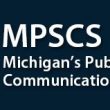Legalities affect signal booster use
In searching for ways to mitigate interference at 800 MHz, much attention has been focused on the use of signal boosters, or bi-directional amplifiers (BDAs). With recent innovations to make BDAs more effective and user-friendly, their use has become more commonplace in a variety of frequency bands. However, scant attention has been paid to how these devices may legally be used.
There is evidence to suggest BDAs are being used by non-licensees to boost the signal of a licensee’s station, without the knowledge or permission of the licensee. Unfortunately, the use of BDAs by the well-intentioned, but unknowing, novice can result in interference — or possibly the amplification of undesired signals — negating the rationale for employing the device in the first place.
As defined by the FCC, a signal booster “is a device that receives an incoming signal, amplifies it and retransmits it on the same frequency. It is used to improve communications in locations within the normal coverage area of a radio system where the signal is blocked or shielded due to natural terrain or man-made obstacles (e.g., to provide fill-in coverage but not increase the normal coverage area). For instance, signal boosters may be used to fill in ‘dead spots’ in locations such as valleys, tunnels, below-ground parking facilities, or inside cargo vessels and aircraft hangers.”
Although some sort of licensing or notification process for signal boosters was proposed, the FCC elected to make the use of BDAs permissible by licensees without a separate authorization. However, the FCC made it clear at several junctures that only licensees may employ signal boosters. Consequently, if you’re the end user of a Part 90 SMR system, for example, and you don’t like your in-building coverage, the SMR operator may use a BDA to fix the signal level, but you may not do so on your own.
The FCC’s rules mandate that signal boosters be placed only where the BDA’s signal (a five-watt ERP limitation per channel) does not extend the “normal signal coverage area” of the licensee’s system and may not be used to expand that coverage area. Of course, “normal” will vary by service. For Part 90 systems, at 800/900 MHz, a system’s “service area” would be defined as the system’s 40 dBu F (50,50) contour, whereas at 450 MHz the contour is 39 dBu, and at 150 MHz it is 37 dBu. Thus, while the rules do not define “normal signal coverage area,” it would seem reasonable that a signal booster placed sufficiently within those 40, 39 or 37 dBu contours to prevent the BDA signal from extending beyond that contour would satisfy the criteria.
In addition, there is a further limitation on the use of Class B broadband signal boosters. Specifically, broadband BDAs may be used only in “confined or indoor areas such as buildings, tunnels, underground areas, etc., i.e., areas where there is little or no risk of interference to other users.” While the FCC recognized that a BDA placed in a building may radiate outside of the building, it considers the possibility of interference from such operations to be small.
Signal booster technology has made significant gains in usability since the FCC permitted its widespread use in 1995. It can be expected that further advances will make this technology an even more attractive alternative.
However, in order to be able to continue BDA usage on an unlicensed basis, it will be important for the industry to remember the dos and don’ts of their use.
Alan Tilles is counsel to numerous entities in the private radio, Internet and entertainment industries. He is a partner in the law firm of Shulman Rogers Gandal Pordy & Ecker, and can be reached at [email protected].

















